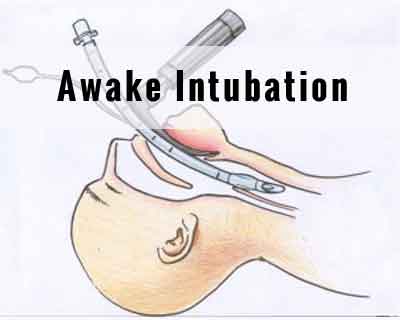- Home
- Editorial
- News
- Practice Guidelines
- Anesthesiology Guidelines
- Cancer Guidelines
- Cardiac Sciences Guidelines
- Critical Care Guidelines
- Dentistry Guidelines
- Dermatology Guidelines
- Diabetes and Endo Guidelines
- Diagnostics Guidelines
- ENT Guidelines
- Featured Practice Guidelines
- Gastroenterology Guidelines
- Geriatrics Guidelines
- Medicine Guidelines
- Nephrology Guidelines
- Neurosciences Guidelines
- Obs and Gynae Guidelines
- Ophthalmology Guidelines
- Orthopaedics Guidelines
- Paediatrics Guidelines
- Psychiatry Guidelines
- Pulmonology Guidelines
- Radiology Guidelines
- Surgery Guidelines
- Urology Guidelines
High success, less complications with Awake Intubation : Study

Awake intubation is the standard of care for management of the anticipated difficult airway. The performance of awake intubation may be perceived as complex and time-consuming, potentially leading clinicians to avoid this technique of airway management.
A Retrospective Study of 'Success, Failure, and Time Needed to Perform Awake Intubation has been published in the Journal Anaesthesiology ( Journal of the American Society of Anaesthesiologists) recently, which deals with the topic of awake intubations.
Conducted by Thomas T. Joseph, M.D., Ph.D.; Jonathan S. Gal, M.D.; Samuel DeMaria, Jr., M.D.;Hung-Mo Lin, Ph.D.; Adam I. Levine, M.D.; and Jaime B. Hyman, M.D., the research study was performed to determine the average time taken to perform awake intubation, its effects on hemodynamics, and the incidence and characteristics of complications and failure.
Anesthetic records from 2007 to 2014 were queried for the performance of an awake intubation. Of the 1,085 awake intubations included for analysis, 1,055 involved the use of a flexible bronchoscope. Each awake intubation case was propensity matched with two controls (1:2 ratio), with similar comorbidities and intubations performed after the induction of anesthesia (n = 2,170). The time from entry into the operating room until intubation was compared between groups. The anesthetic records of all patients undergoing awake intubation were also reviewed for failure and complications.
The study found that the median time to intubation for patients intubated post induction was 16.0 min from entrance into the operating room. The median time to intubation for awake patients was 24.0 min . The complication rate was 1.6%. The most frequent complications observed were mucous plug, endotracheal tube cuff leak, and inadvertent extubation. The failure rate for attempted awake intubation was 1% (n = 10).
The results made the researcher conclude, that, Awake intubations have a high rate of success and low rate of serious complications and failure. Awake intubations can be performed safely and rapidly.

Disclaimer: This site is primarily intended for healthcare professionals. Any content/information on this website does not replace the advice of medical and/or health professionals and should not be construed as medical/diagnostic advice/endorsement or prescription. Use of this site is subject to our terms of use, privacy policy, advertisement policy. © 2020 Minerva Medical Treatment Pvt Ltd